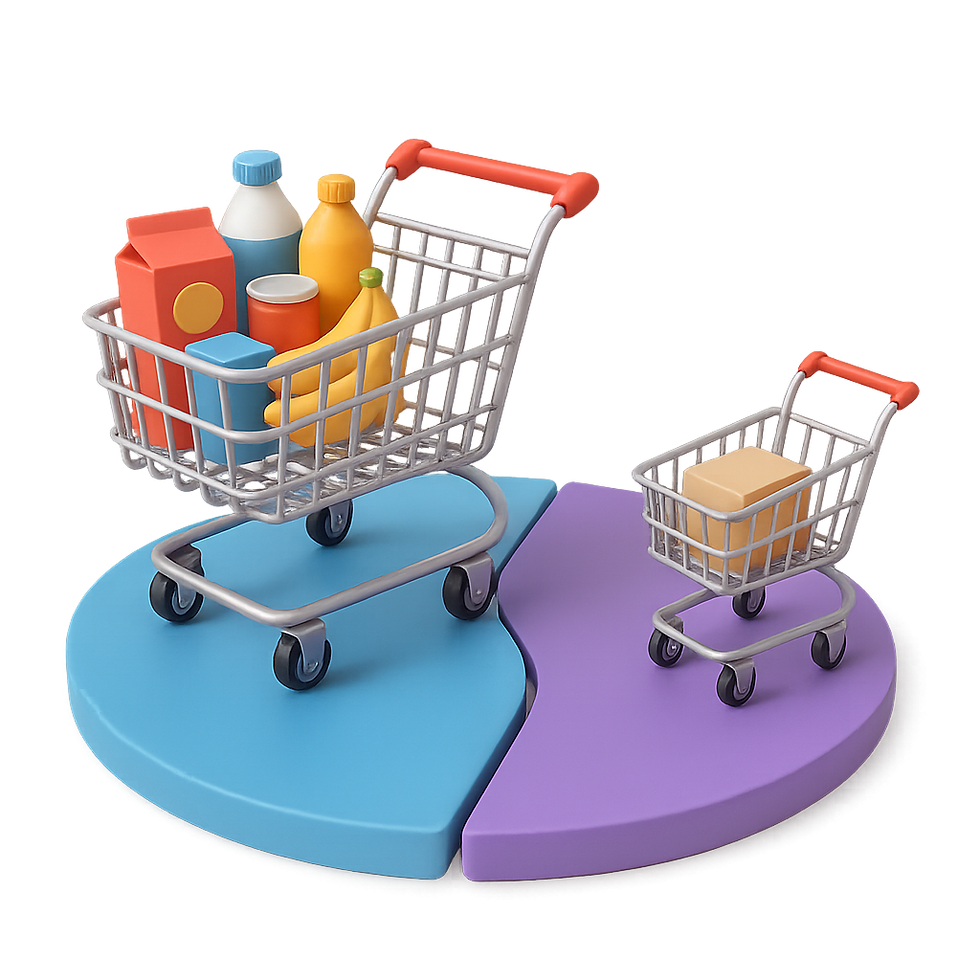Attribution Challenges: Understanding How Multiple Touchpoints Impact Your Google Shopping ROAS
- Adnan Agic
- Jun 18
- 3 min read

When analyzing the performance of Google Shopping campaigns, many advertisers focus on Return on Ad Spend (ROAS) as a core KPI. But attributing conversions solely to the last click, especially in today’s multi-touch digital environment, can be misleading. A single purchase might involve a customer seeing a Shopping ad, clicking a remarketing banner, reading a review, and only then converting through branded search. If your attribution model doesn’t reflect these interactions, you risk undervaluing or overvaluing specific campaigns and making misguided optimization decisions.
The Multi-Touch Journey in E-commerce
Modern consumers rarely convert on their first interaction. Especially in industries with higher consideration products, it’s common for users to have multiple touchpoints across:
Google Shopping Ads
Search Text Ads
Display Retargeting
Email Marketing
Social Media Ads
Organic Search or Direct Return Visits
Google Shopping often plays a discovery or mid-funnel role—getting the product in front of a new audience. But if your attribution model credits only the last click, Shopping campaigns may look like they’re underperforming—even if they sparked the buyer’s interest initially.
Why Last-Click Attribution Skews Google Shopping ROAS
Most standard Google Ads accounts default to last-click attribution, which assigns 100% of the conversion credit to the last interaction. Here’s how that can affect ROAS reporting:
Shopping Ads Look Inefficient: If someone first clicks a Shopping ad but later converts through a branded search, the branded campaign gets the credit—and Shopping’s ROAS appears low.
Top-of-Funnel Channels Get Cut: Channels that drive awareness but not direct conversions often get undervalued and have budget reduced.
You Optimize the Wrong Campaigns: Relying on misleading data can push you to double down on campaigns that don’t truly drive growth.
Attribution Models Available in Google Ads
To combat this, Google offers several attribution models that better reflect multiple touchpoints:
Linear: Distributes credit equally across all clicks in the path.
Time Decay: More credit goes to clicks closer to the conversion.
Position-Based (U-Shaped): 40% credit to first and last interactions, 20% split across the middle.
Data-Driven Attribution (DDA): Uses machine learning to assign credit based on historical data patterns. This is the most recommended if you have enough conversions.
Switching from last-click to DDA (or even position-based) can reveal just how much your Shopping ads contribute to the full journey, not just the final step.
Practical Tips for Advertisers
Review Assisted Conversions in Google Analytics: See how Shopping contributes to conversions indirectly.
Compare Attribution Models: Use the “Model Comparison Tool” in Google Ads to see how ROAS changes.
Segment Campaigns by Funnel Stage: Label your campaigns based on where they fit in the journey—awareness, consideration, or conversion—and evaluate them accordingly.
Don’t Cut Upper Funnel Budgets Too Quickly: Campaigns with low direct ROAS may be critical to long-term profitability when seen in a multi-touch context.
Real Example: Misjudging Performance
An apparel brand running Google Shopping ads saw low ROAS from Shopping but high returns from branded search. After switching to data-driven attribution, they discovered Shopping campaigns were initiating 70% of paths that ended in conversion. With this insight, they scaled Shopping ads and improved total revenue by 32%—all because they stopped attributing conversions to the last touch only.
Conclusion
Understanding attribution is key to getting a true picture of your Google Shopping performance. ROAS shouldn’t be looked at in isolation, especially if your attribution model doesn’t reflect how people actually shop. Switching to a more comprehensive model like data-driven attribution can help you optimize your budget more effectively, value your touchpoints accurately, and grow your revenue more sustainably.
Need help navigating attribution and ROAS reporting? Contact us and let Flomaticx guide your optimization journey.
About the Author
Adnan is a digital marketing specialist with expertise in e-commerce optimization. With a bachelor's degree in Business Psychology focused on online customer behavior and analysis, he brings a unique perspective to understanding shopping behaviors and conversion patterns.



Comentarios